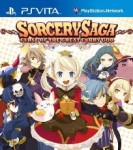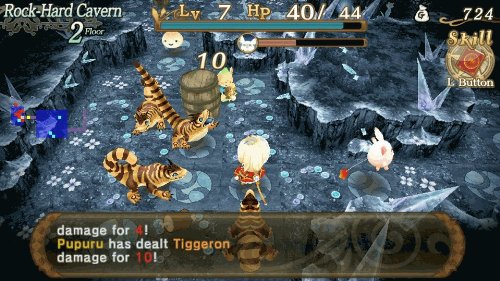Reader Review: Sorcery Saga (Vita)
 My friend Leroy is back to review a wacky dungeon crawl game for PS Vita called Sorcery Saga. In it, you must delve into dungeons to find ingredients for the ultimate curry recipe. With that as a wacky premise, how could you NOT read this review?
My friend Leroy is back to review a wacky dungeon crawl game for PS Vita called Sorcery Saga. In it, you must delve into dungeons to find ingredients for the ultimate curry recipe. With that as a wacky premise, how could you NOT read this review?
Sorcery Saga: Curse of the Great Curry God is a rouge-like dungeon RPG for the PlayStation Vita, developed by Compile Heart and published by Aksys Games. It is available both digitally through the PlayStation Store and at retail as a Vita game cartridge.
The game beings with a young girl Pupuru taking an exam at a magical school, which through a series of wacky events, eventually leads her on the path to gathering ingredients to create a legendary curry in order to keep her favorite curry restaurant open in the face of the super extra-large (and possibly evil) chain restaurant that has come to town. Naturally, each ingredient is hidden away in various, dangerous dungeons, not to mention that several friends and foes alike are also on the trail of this legendary curry dish.
Sorcery Saga is a rogue-like, a subgenre of RPG that is far more gameplay focused over narrative and typically features randomly generated dungeons and high difficulty levels. Most rogue-likes, whether they focus on one large dungeon or several used to string together a narrative, generally start the player off from scratch when entering (or reentering) each dungeon. I always like to think of rogue-likes as “Arcade RPGs,” where the dungeons are individual challenges.
While most Japanese rogue-likes tend to stick to focusing on the rouge-like aspects, while adding story and character elements to strong together carious dungeons and challenges. Sorcery Saga, however, takes quite an opposite approach, where the story and characters take center stage and the dungeons are simply there to give the player something to do in-between very lengthy cut-scenes. Along with that, the actual dungeon aspect is far less punishing. Rogue-likes tend to ask the player to learn the intricacies of the game (typically through repeated deaths), learning what monsters are capable of what, how to use different items in different situations and how to react and survive in dire situations. Sorcery Saga is far less intricate, and while new players may stumble once or twice as they grow accustomed to how games like this function, veterans are going to wonder if it’s even possible to fail and blaze through most of the game with ease.
However, as previously noted, it does appear that Sorcery Saga is more interested in its story, or more specifically, its characters. Most of the cut-scenes in the game are fairly lengthy (or feel lengthy, at least) and often focus more on individual character interactions than advancing the overarching plot (since the overarching plot involves finding a curry recipe, this isn’t too surprising). The level of enjoyment you will get out of this will be dependent on how much you like modern anime and otaku stuff. I personally found this aspect of the game slightly frustrating, with irritating characters and painfully grating voice acting.
The game’s primary content should last under twenty hours or less, depending on a few things such as having previous experience in the genre or skipping lengthy cut-scenes. There is a quest guild, which issues varying challenges for replaying dungeons for rewards such as character costumes that will add a decent level of extra content if you are so inclined.
Overall, I think Sorcery Saga may be a good entry-level rouge-like for people interested in the genre but are scared away by legend of cruelty. Anime fans may enjoy the variety of characters and the constant interactions presented and the overall narrative has a comedic and lighthearted tone, which is a nice change of pace for RPGs.
Kid Factor:
Sorcery Saga is rated T for Teen with ESRB descriptors of Drug Reference, Fantasy Violence, and Suggestive Themes. The characters are graphics of Sorcery Saga are bright and cheerful but a good deal of the text is sexually suggestive, most of it tending to be upfront as opposed to subtle. There is no extremely graphical violence outside of cartoon swords and bombs. –Leroy Capasso






Discussion Area - Leave a Comment